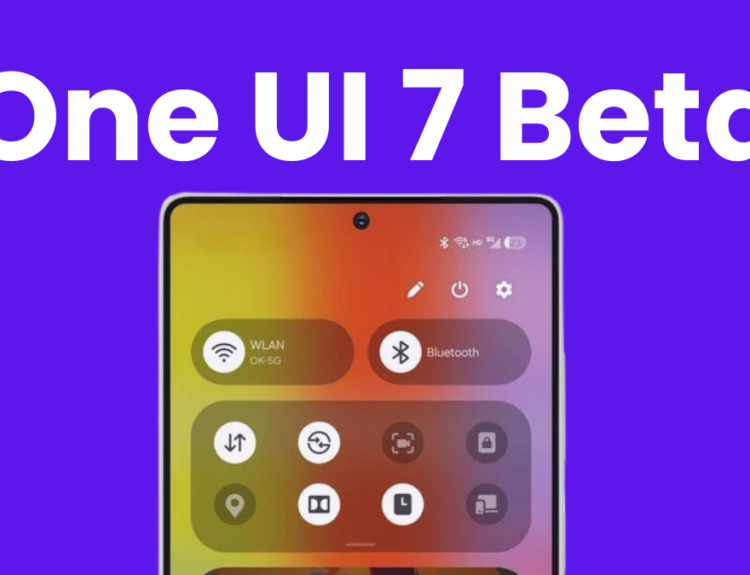Apple has long been celebrated for its seamless blend of cutting-edge hardware and intuitive software, shaping the modern smartphone experience. Recently, rumors have emerged about a potential visual overhaul for iOS 19 and macOS 16, drawing inspiration from the sleek, immersive design of visionOS. While a refreshed aesthetic might grab attention, it risks overshadowing a more pressing issue: Siri, Apple’s once-groundbreaking voice assistant, remains underwhelming and outdated. With reports of delayed AI enhancements and internal setbacks plaguing the Siri team, the company faces a clear choice. Prioritizing a smarter, more capable Siri over another cosmetic update to an already refined operating system could be the key to maintaining Apple’s edge in an increasingly competitive landscape.
The Broken Promise of Apple Intelligence
Apple hyped up Apple Intelligence at WWDC 2024, promising a Siri that could finally keep pace with the AI-driven world. This wasn’t just about better voice recognition—it was about a Siri that could understand context, handle multi-step tasks, and integrate deeply with iOS apps. Imagine asking Siri to pull a recipe from your email, add the ingredients to a shopping list, and set a reminder to preheat the oven—all in one seamless flow. That’s the kind of innovation Apple dangled in front of us, only to quietly push it back to 2026 or later. For a company that thrives on delivering polished experiences, this delay feels like a rare fumble.
Sure, Apple has tossed in some stopgap upgrades—like ChatGPT integration and a glowing edge animation—but these don’t fix Siri’s deeper flaws. It still stumbles over complex queries, forgets context mid-conversation, and lags behind rivals like Google Assistant. Worse, whispers of “ugly and embarrassing” setbacks within the Siri team, as reported by Bloomberg, suggest that Apple might have bitten off more than it can chew with its AI ambitions. Why promote a feature that’s not ready to shine?
Why Siri Is the Heart of the Mobile Experience
Voice assistants aren’t just a gimmick anymore—they’re the backbone of how we interact with our devices. In 2024, users expect their phones to anticipate needs, streamline tasks, and bridge the gap between apps and hardware. Google Assistant can plan your day with eerie precision, while Alexa runs entire smart homes with ease. Siri, though, often feels like a relic—charming but out of its depth. For Apple, whose ecosystem is built on effortless integration, a subpar voice assistant isn’t just an inconvenience; it’s a crack in the foundation.
Siri should be the invisible thread tying your iPhone, Apple Watch, and HomePod together—knowing you’re headed to a meeting and offering to text your ETA, or pulling up your boarding pass near the airport. Instead, users often resort to manual navigation for tasks Siri should handle effortlessly. With competitors raising the bar, Apple risks losing ground in a space it once pioneered, especially for those who invested in devices like the iPhone 15 Pro or iPhone 16 expecting the promised AI leap.
A Redesign Won’t Mask the Real Problem
The rumored visionOS-inspired overhaul for iOS and macOS promises translucent menus, 3D effects, and a futuristic vibe borrowed from Apple’s mixed-reality headset, as hinted by MacRumors. It’s a bold move that could dominate headlines and entice upgrades. Yet, iOS doesn’t need a makeover. Since the transformative iOS 7 redesign in 2013, Apple has layered in customization—widgets, lock screen tweaks, icon tinting—keeping the OS fresh and functional. A new look might dazzle, but it won’t make your iPhone smarter.
Focusing on aesthetics now could misfire. Users aren’t begging for prettier menus—they want a Siri that delivers. Diverting resources to a redesign while Siri falters might suggest Apple prioritizes flash over substance, a misstep for a brand built on excellence.
The Competitive Landscape: Where Siri Stands in 2025
By March 2025, the voice assistant race has intensified. Google Assistant leverages Gemini AI for conversational depth, while Amazon’s Alexa integrates with an ever-expanding smart home ecosystem. Even emerging players like Samsung’s Bixby have upped their game with multilingual support. Siri, despite its head start in 2011, struggles to keep up—its responses often lack the nuance or foresight of rivals. In a world where AI drives everything from car interfaces to wearables, Apple’s lag risks alienating users who expect a premium experience across its $2 trillion ecosystem. Siri’s stagnation isn’t just a feature gap; it’s a competitive liability.
Apple’s Privacy Promise: A Double-Edged Sword for Siri
Apple’s commitment to on-device processing and user privacy sets it apart—but it’s also a hurdle for Siri. Unlike Google and Amazon, which lean on cloud-based AI to power their assistants, Apple insists on keeping most processing local, as outlined in its privacy policy. This limits Siri’s ability to tap into vast datasets that fuel advanced language models, slowing its evolution. While users value the security, they’re left with an assistant that can’t match the cloud-driven smarts of competitors. Apple’s challenge is clear: innovate within these self-imposed constraints or risk losing relevance in the AI race.
The AI Hurdle Apple Can’t Ignore
Building a next-gen Siri is no small feat. It demands cutting-edge AI to parse natural language, retain context, and execute complex tasks—areas where Apple’s secrecy might hinder progress, as Wired suggests. Catching up to rivals who’ve refined their AI for years is a tall order, and the clock’s ticking. The longer Siri lags, the more users might turn to Android’s Google Assistant or third-party apps like Perplexity, which outshine Siri in search and reasoning. Transparency about these challenges—“It’s tough, but we’re on it”—could temper user frustration, yet Apple remains tight-lipped.
User Feedback: What iPhone Owners Are Saying
Across forums like Reddit and X in early 2025, iPhone users vent about Siri’s shortcomings. “It can’t even set a timer right half the time,” one post gripes, while another laments, “I bought the 15 Pro for Apple Intelligence, and all I got was a light show.” The redesign rumors spark mixed reactions—some love the visionOS tease, but many echo, “Fix Siri first!” This sentiment aligns with Consumer Reports surveys showing voice assistant reliability as a top priority for smartphone buyers. Apple’s fanbase is loyal, but patience is wearing thin.
The Cost of Delay: Economic and Brand Impacts
Siri’s delays aren’t just technical—they’re costly. Analysts estimate Apple’s AI push, including server farms and talent hires, runs into billions annually. Pushing Apple Intelligence to 2026 risks denting iPhone sales, especially among early adopters who upgrade for features, not looks. Brand-wise, Apple’s halo as an innovator dims when Siri falters next to flashier AI demos from Google or OpenAI. A Forbes piece warns that prolonged delays could cede market share to Android, where AI is a selling point, not a promise.
What Apple Should Do Next
Apple must pivot to Siri, redirecting resources—engineers, AI talent, funding—to deliver the assistant users were promised. A redesign can wait; a functional Siri can’t. A bold interim move? Open iOS to third-party assistants like Google Assistant or Alexa via the App Store, as TechRadar floats. It’s unlikely, but it’d buy time and signal flexibility while Apple refines its AI game plan.
A Look Back: Siri’s Evolution and Missed Opportunities
Siri debuted in 2011 as a marvel, but its growth stalled. Early wins—like basic commands and witty replies—faded as competitors surged ahead with machine learning. Apple’s 2018 hire of Google’s AI chief, John Giannandrea, hinted at ambition, yet progress has been glacial. Missed chances, like deeper HomeKit integration or proactive features, left Siri reactive rather than revolutionary. A CNET retrospective notes how Siri’s potential was squandered, a cautionary tale Apple can’t ignore as it plots its next move.
Top 10 FAQs About Siri and iOS Redesign
- Why is Siri’s Apple Intelligence upgrade delayed?
Setbacks dubbed “ugly and embarrassing” by insiders pushed it to 2026—Apple’s AI isn’t stable yet. - What’s new with Siri in iOS 18?
ChatGPT integration and a glowing edge, but big context-aware features are still brewing. - Will iOS 19 really look like visionOS?
Rumors point to translucent menus and 3D effects, loosely inspired by visionOS for a unified look. - When will we see iOS 19?
Likely WWDC 2025 in June, with a beta in July and full release in September. - Can my iPhone run the new Siri features?
Only iPhone 15 Pro, 15 Pro Max, or iPhone 16 models support Apple Intelligence. - Is the iOS 19 redesign necessary?
Not urgent—iOS is solid, but a new look could refresh interest if paired with substance. - How does Siri compare to Google Assistant now?
Siri trails in complex tasks and context; Google Assistant feels sharper and more proactive. - What’s the biggest change coming to iOS 19?
A visionOS-inspired visual overhaul—icons, menus, and simpler navigation. - Will a better Siri come before iOS 19?
Doubtful—the major upgrade’s pegged for 2026, likely post-iOS 19’s debut. - Why doesn’t Apple just fix Siri now?
AI’s tricky, and Apple’s privacy-first approach slows it down—they’re playing a long game.
The Bottom Line
A visionOS-style iOS 19 might dazzle, but Siri’s the real priority. Apple’s dominance rests on tools that simplify life, not just beautify it. Until Siri matches the competition, no glossy redesign will bridge the gap. It’s time for Apple to focus on intelligence over aesthetics—a voice assistant that listens beats a screen that shines.








